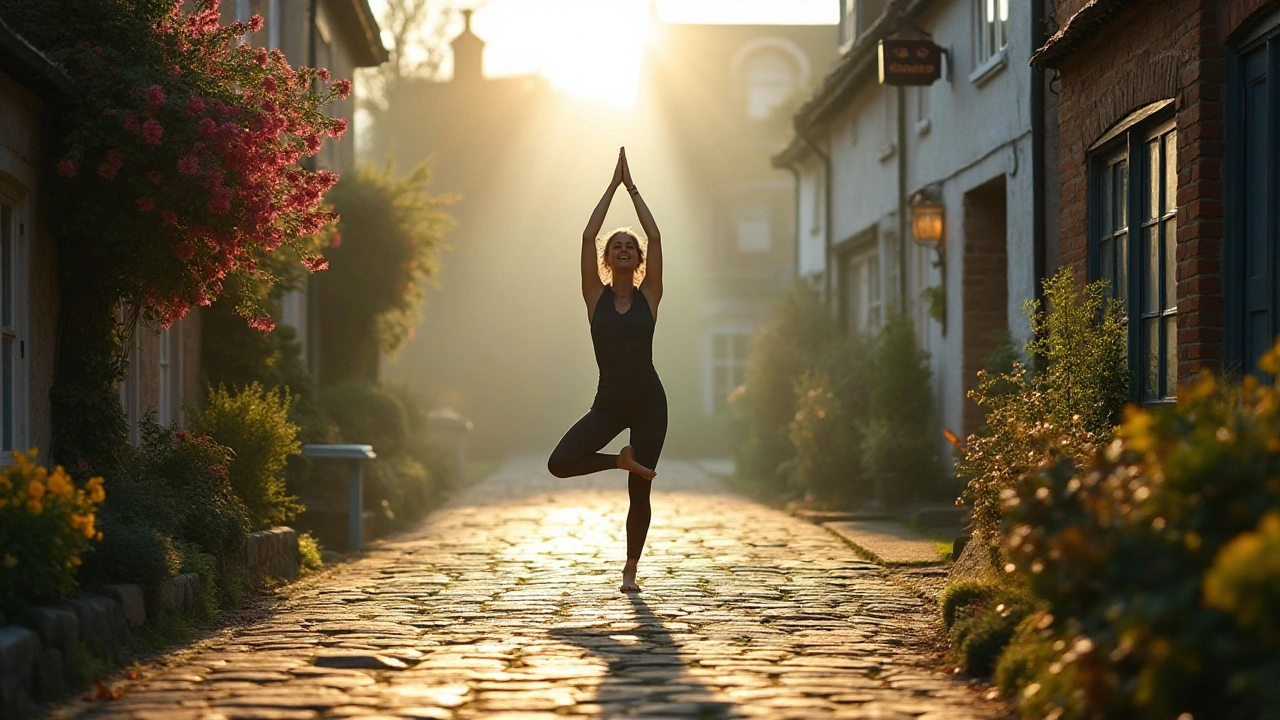Want less stress and more focus without spending hours on a mat? Yoga can do that. You don’t need a studio or fancy gear. A few simple poses and breathing habits, done regularly, change how your body handles pressure, sleep, and even cravings.
Short on time? Try this: 1) Seated diaphragmatic breathing, 2 minutes: sit tall, inhale through the nose for 4 counts, exhale for 6. 2) Cat–Cow, 1 minute: slow spinal moves to ease tension. 3) Downward Dog, 1 minute: press through hands, lift hips to wake up the back and legs. 4) Warrior II (30 seconds each side): builds stability and calm focus. 5) Child’s Pose, 1 minute: rest and reset. 6) Legs-up-the-wall or Savasana, 3 minutes: lie back, let the nervous system settle. That’s it—10 minutes that lower heart rate and clear your head.
Swap moves to match how you feel. Tired and wired? Add slow twists and longer breaths. Stiff? Hold gentle stretches longer and skip deep balances.
Breath work in yoga directly lowers stress hormones. Even five minutes of slow breathing cuts tension and can help you sleep better. Want to eat less on autopilot? Mindful yoga trains attention—so you notice hunger signals instead of scrolling and snacking. That’s why mindfulness and yoga show up together in weight-loss and healthy-eating tips.
Yoga also eases the gut. Gentle twists and belly breaths improve digestion and calm the gut-brain link. If stress tightens your stomach after a big meeting, a short restorative sequence can ease the knot faster than caffeine or another snack.
Recovering from workouts? Add yoga to your routine for better muscle recovery and injury prevention. Simple stretches increase circulation and reduce soreness, which helps you perform better in sports and daily life.
New to yoga? Start slow. Use a chair or wall for balance, bend the knees in standing poses, and skip anything that causes sharp pain. Pregnant, injured, or on medication? Check with your healthcare provider before starting. Small changes, repeated, matter more than occasional long sessions.
Want results? Aim for 3–5 short sessions a week instead of one long class a month. Try morning breathing to set the tone for the day and a brief evening routine to wind down. Track how you sleep, stress levels, and eating habits for a few weeks—yoga’s benefits show up steadily.
No time for long classes, but want to feel better? Roll out a mat, breathe for two minutes, move for eight. That small habit will pay off in clearer thinking, calmer reactions, and better nights. Try it today and notice one thing that changes.

Mindfulness and yoga are ancient practices that have grown tremendously popular for their physical and mental health benefits. This article explores how these two disciplines complement each other, providing a holistic approach to well-being. From enhancing concentration to reducing stress, the combined practice offers practical tools for improving daily life. Learn tips on integrating mindfulness with your yoga routine for a harmonious lifestyle.
Read More
Mindfulness and yoga have become increasingly popular for their ability to reduce stress and promote well-being. This article explores the harmonious relationship between the two, highlighting how they complement each other. Readers will discover interesting facts about the practice and how it enhances both mental and physical health. Learn simple tips on integrating these practices into daily life for a more centered and fulfilling experience.
Read More